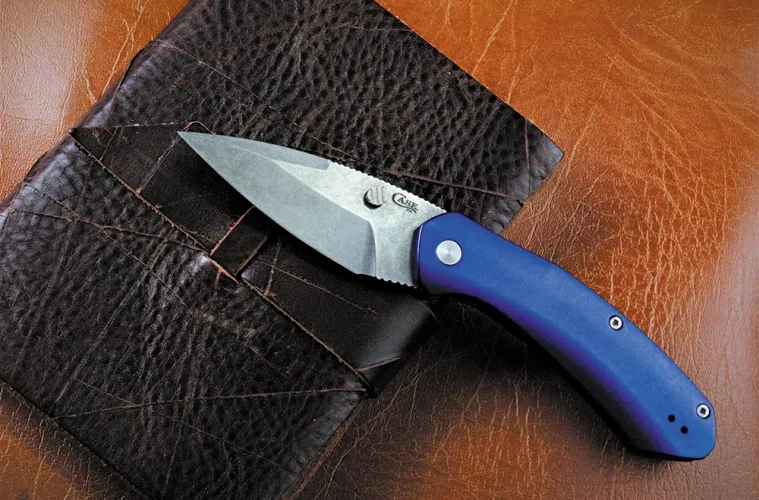The Case Westline will likely change your view of this American knife company. I can’t help it. When I think of knives from W.R. Case & Sons Cutlery, I think of classy USA-made slip-joint pocketknives with jigged bone handle scales. Maybe that’s because I own more of them than any other type of knife by any other maker. When taking notes for this article, I sharpened my pencil with one.
“…a label of ‘EDC knife’ means it should be able to handle most anything you face during your day without ever feeling awkward or clumsy in the hand.”
But the new Case Westline has given me a new appreciation for the other types of knives the company produces. A couple of years ago, I reviewed the then-new Case Marilla and Kinzua models. These were ruggedly built manual flippers, each with a single locking blade. They weren’t display pieces or collector items; they were sturdy modern EDC blades made to tackle the toughest chores. The Westline continues the line of Case modern EDC folders, but this time with an added feature: It’s an assisted opener.
MEASURING THE WESTLINE
The Westline measures 7.75 inches overall when open and 4.5 inches closed. Its blade is about 3.25 inches with a 2.75-inch plain cutting edge. That blade is made of the excellent S35VN steel with a stonewashed finish. I prefer a stonewashed or matte finish over a mirror finish any day.
The drop-point blade comes to a fine point thanks to a swedge on the spine, and the blade has plenty of belly, too. There’s lots of jimping (more than 1.5 inches) on the spine with additional jimping on the bottom just behind the edge, useful if you want to get your hand over the blade when making certain precise cuts.
The Westline blade seemed to be thinner than those of the Marilla and Kinzua by the naked eye. So, I took a caliper to it and found the Westline’s blade measured 0.106 inch compared to the beefy Kinzua at 0.145 inch. The Westline’s swedge on the spine further reduces the blade thickness toward the tip. Although I love the Kinzua’s thick blade, this is not a knock on the Westline. I anticipated the Westline would be a great slicer and I wasn’t disappointed.
HEFTY HANDLE
The handle is aluminum. Mine is blue. That pleased me right away as I’m partial to most anything that’s blue unless it’s something I find in the far corner of the refrigerator. Also, the Westline is available with red, black, or silver handle scales.
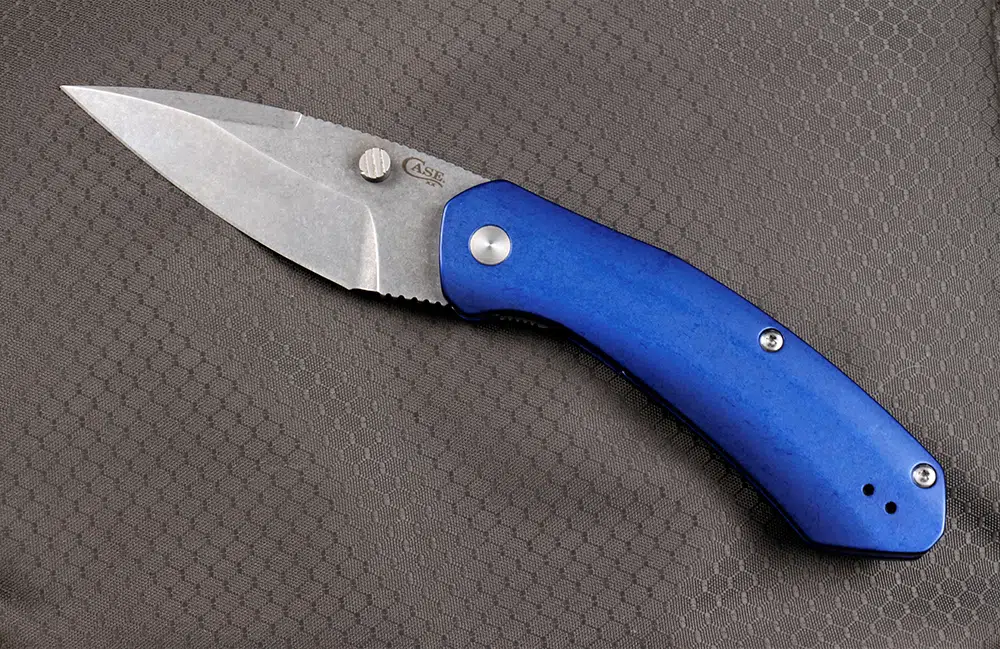
The sleek contours of the Westline’s aluminum handle together with the shape and sharpness of the blade made this knife a joy to use.
The handle is slick. I normally like a bit more texture on my knife handles, but the shape of a handle contributes as much to maintaining a secure hold on a knife as the texture does. In this instance, the curvy, down-turned handle of the Westline provides for a good grip on the knife.
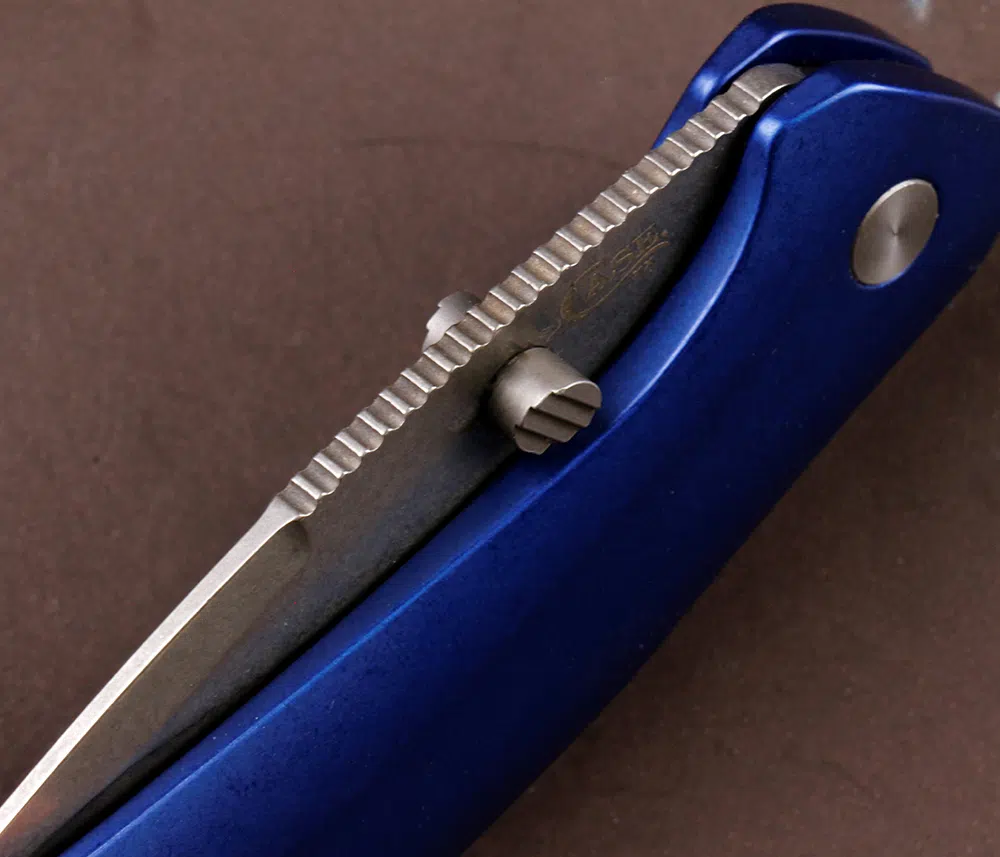
The Westline has dual thumb studs that are angled to guide the thumb in the best direction for opening the blade smoothly.
The knife feels sturdy in the hand, and I think the thickness of the handle at about 0.5 inch across contributes to that. This is a hefty knife at 4.5 ounces and that weight seems reassuring without the feeling of being weighed down when carried in a pocket. Spacers are used to join the two halves of the handle for an open design that won’t trap lint or other debris.
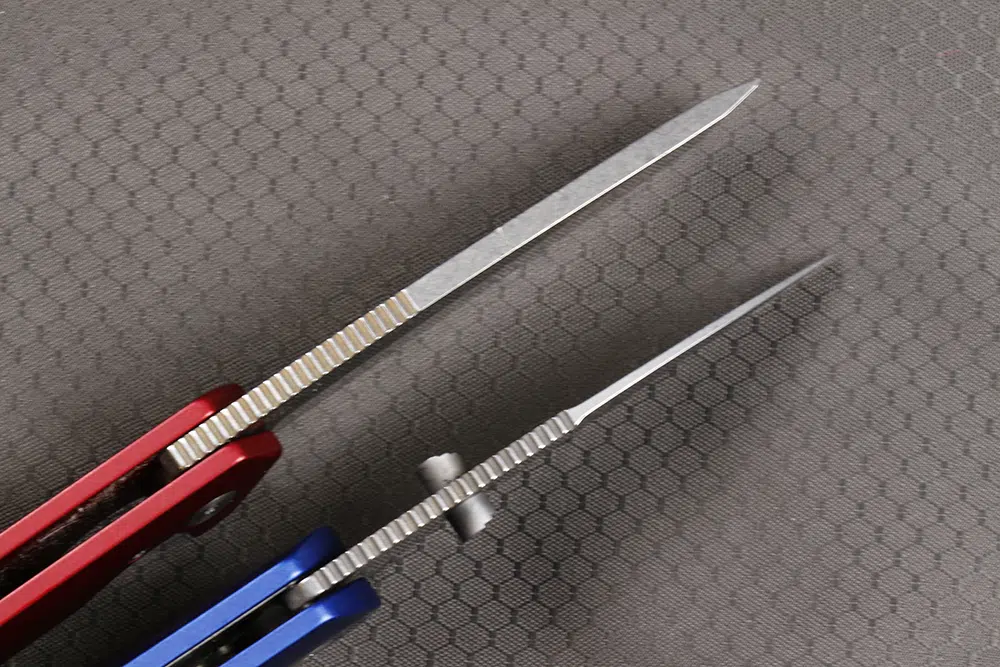
The blade of the Kinzua is much thicker than that of the new Westline. Both are excellent knives.
I found that the contours at the rear of the handle allowed me to move my hand back along the handle so that my pinky finger wrapped around the end of it. This gave me more reach with this knife, something that comes in handy on occasion.
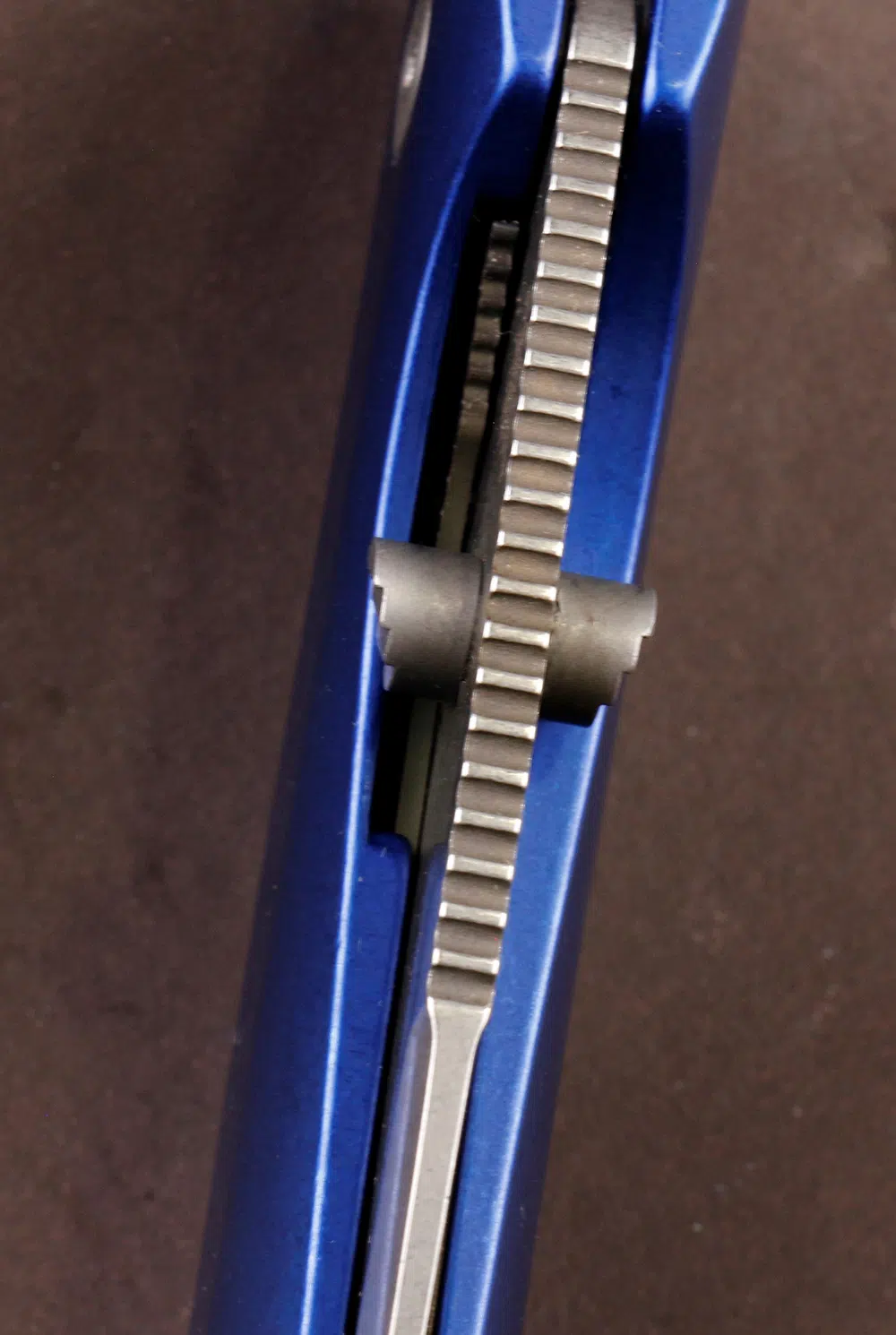
The Westline’s blade features substantial jimping on the blade spine should you want to get your thumb involved in guiding the blade.
The steel pocket clip is of the deep-carry variety. It’s positioned for tip-up carry and is reversible.
FAST OPENER
The Westline features dual thumb studs. Not only are they grooved, but their height is angled to give the thumb the best natural angle to push the blade to begin the opening motion. A strong spring takes over from there. The blade opens fast and locks securely.
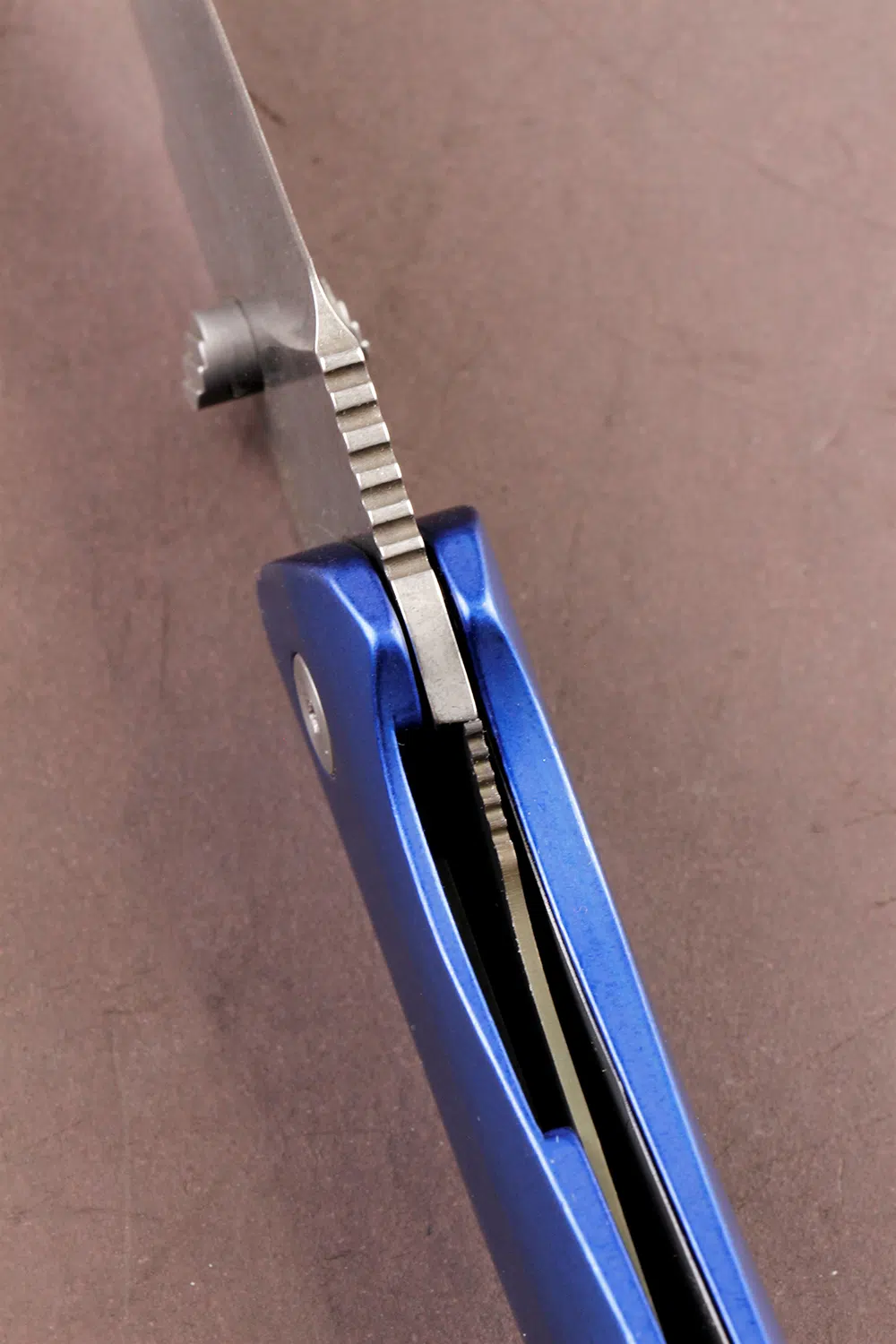
The Westline’s liner lock fully engages the tang of the knife blade, providing positive lockup.
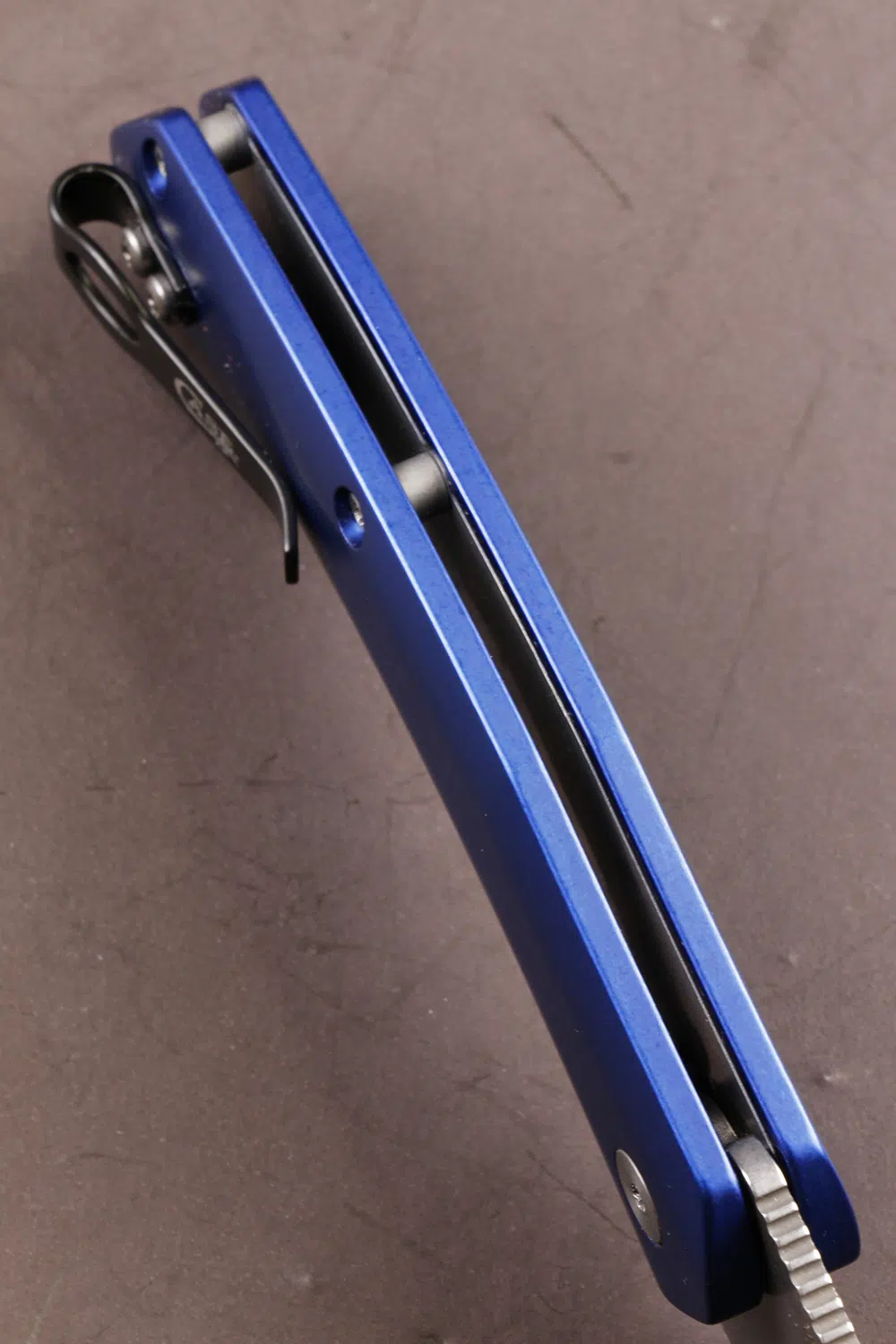
The two halves of the Westline’s frame are joined by spacers that allow for a fully open handle design that helps to keep debris and moisture from building up inside the knife.
Where the Marilla and Kinzua feature frame locks, the Westline has a liner lock. The liner used for the lock is thin, but it engages more fully than that on many other knives I’ve tested and that’s a confidence booster.
CAPABLE CUTTER
I tested the Westline on a number of materials around my house and yard, including some rubber hose, polypropylene rope, nylon webbing, cardboard boxes, and sticks from the yard. This is when the contours of the handle design proved themselves to be a real aid in the handling and cutting properties of this knife.
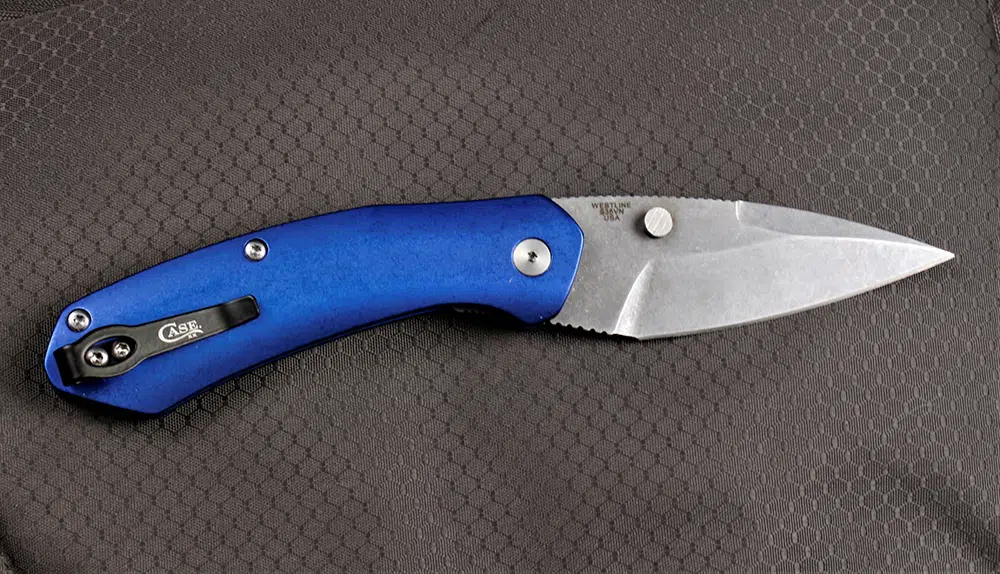
The Westline features a steel, deep-carry pocket clip that’s reversible. It’s configured for tip-up carry.
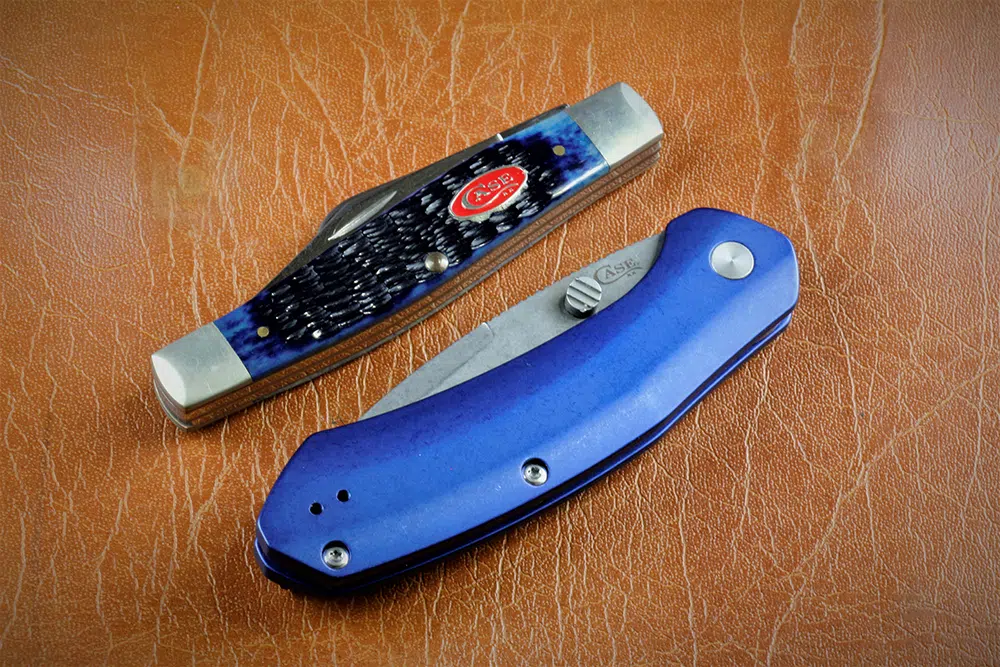
Westline (bottom) is shown with another of the author’s favorite Case knives, a more traditional three-blade Stockman.
The smooth handle scales were never an issue on maintaining a secure grip on the knife. And should I use this knife for woods carry, I’m confident the handle would stay supremely comfortable through difficult or prolonged tasks. The comfort of the handle together with the shape and sharpness of the blade made cuts seem almost effortless.
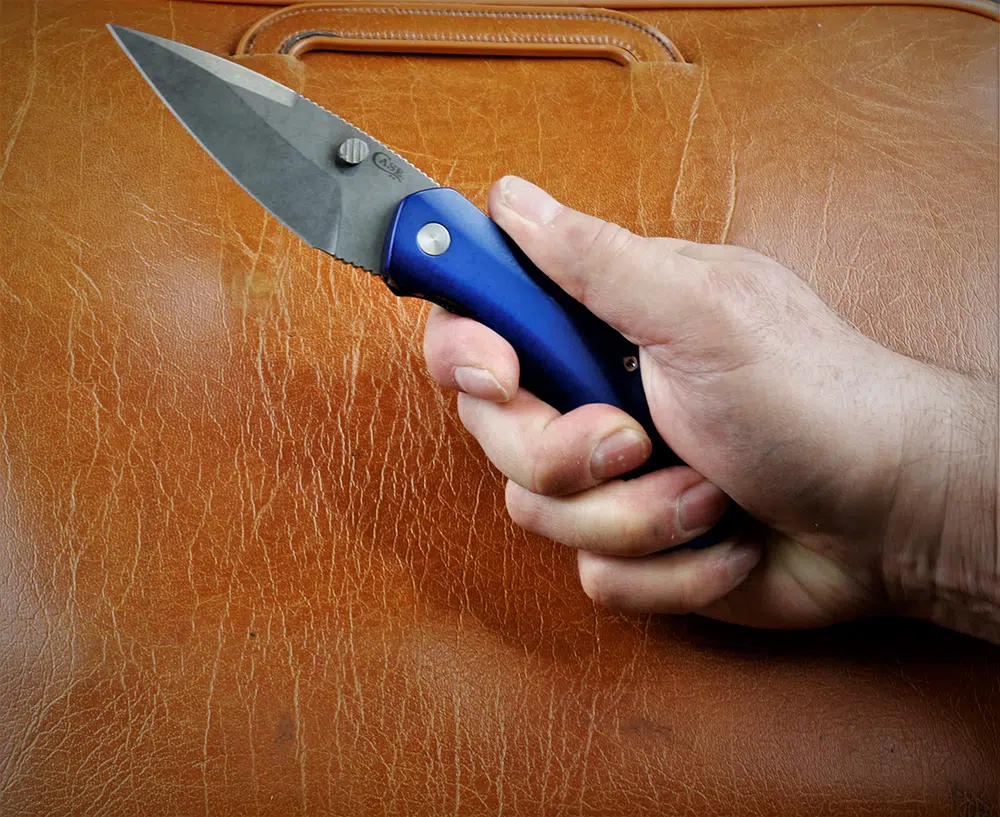
By curling his pinky finger around the back of the Westline’s contoured handle, the author was able to get a bit more reach with this knife if needed.
I used the Westline to produce a sizable pile of wood shavings for use in my homemade peach-can hobo stove. The fire pit in my backyard serves as my test kitchen where I test various commercially produced and homemade stoves, grill tops, and kitchen utensils. Here too is where I give the thumbs-up or thumbs-down verdict on any new Dutch oven camp recipes I try.
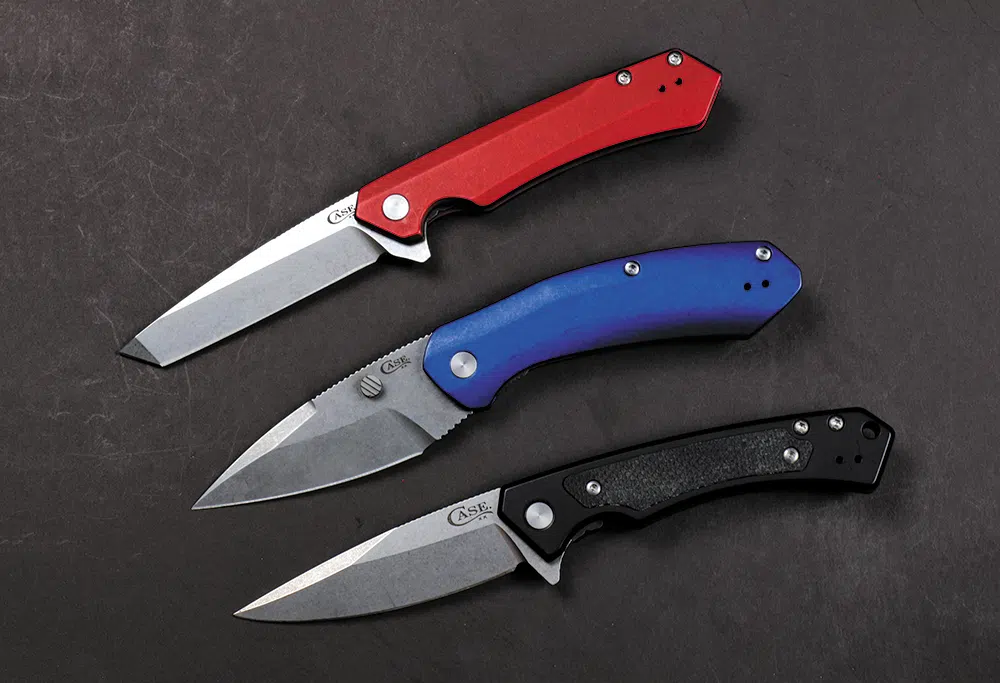
The new Case Westline is flanked by the Case Kinzua (top) and Marilla (bottom) for a winning lineup of modern EDC folders.
I sliced some cucumbers with the Westline, too, not so much to gauge its ability to cut them but to see if food prep in camp or on the trail might be more of a joy than a chore with this knife. Again, the Westline proved to be a pleasure to use.
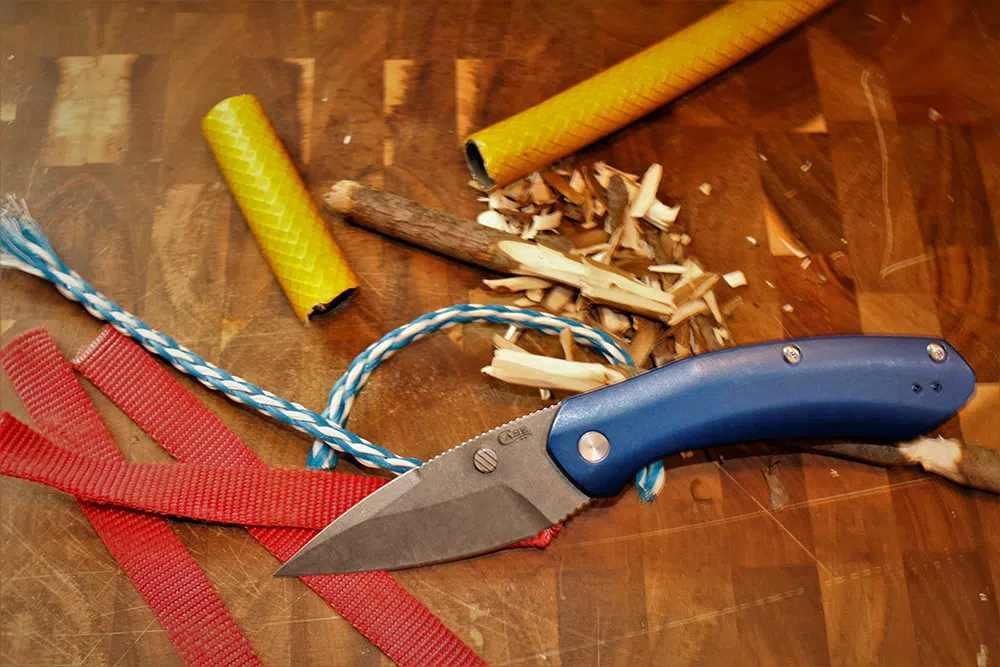
The Westline can handle almost any cutting chore that you can throw at it.
While the Westline isn’t designed as a bushcraft or camping knife specifically, a label of “EDC knife” means it should be able to handle most anything you face during your day without it ever feeling awkward or clumsy in the hand. The Westline proved worthy of the everyday carry moniker.
OVERALL FAVORABLE
With the company’s long legacy of elegant, traditional slip joints, its history of fine hunting knives, and the military influence shown in the collaborations with Winkler Knives, I’m convinced that Case can do anything it aims to do in the knife industry with top quality. The company’s line of modern EDC folders is further proof of this.
“The comfort of the handle together with the shape and sharpness of the blade made cuts seem almost effortless.”
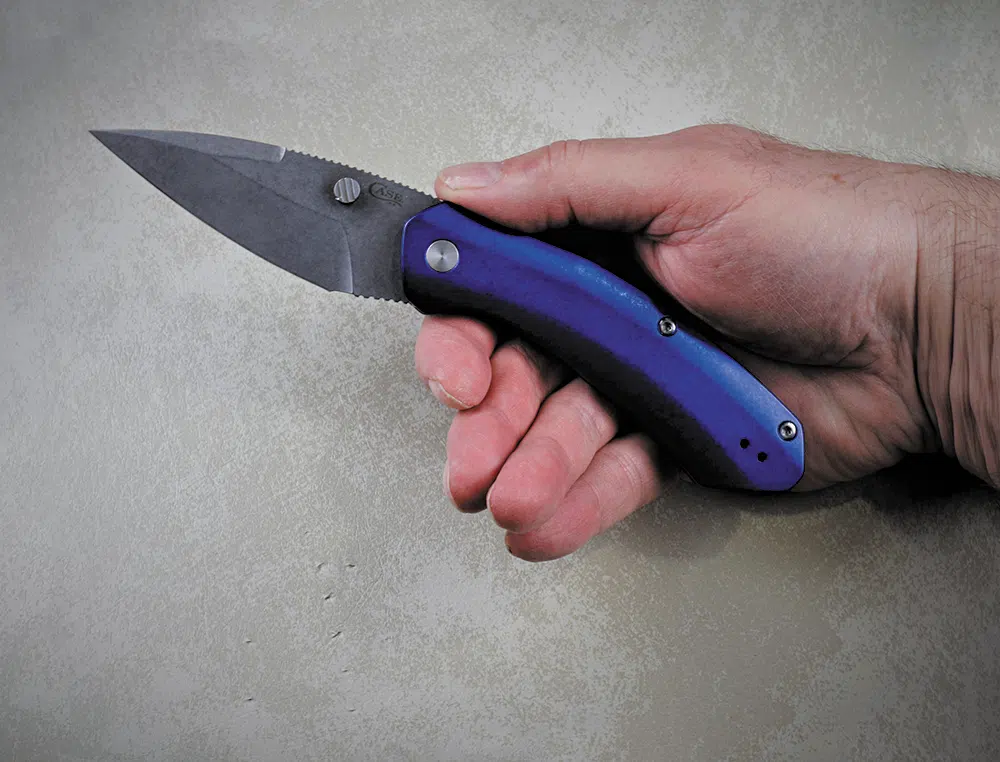
There’s enough handle on the Westline to suit most hand sizes and most grip techniques.
Some will continue to think of Case as the maker of old-style “grandpa’s knives.” Yes, I am a grandpa, but my love of Case knives began in my youth many years ago. Now, however, with the Marilla, Kinzua, and new Westline, I’ve got a secondary image in my mind when it comes to the company’s blades. If I need a no-frills, solid USA-made workhorse of an EDC blade, I know Case has some good options there too.
MORE WESTLINE OPTIONS TO COME?
This year Case extended its lineup of Kinzua folders to include some custom models that feature themed artwork on the handles, such as snakeskin and camo patterns, and different finishes on the blades, such as Cerakote and Diamond-Like Carbon (DLC) coatings.
I would anticipate that once the Westline takes a firm position among the company’s modern EDC folder offerings, similar options will be available for it. That will give the owner a chance to carry something more distinct and in line with personal tastes and styles.
SPECS
Model: Case Westline
Type: Assisted-opening folder
Overall Length: 7.75 inches
Blade Length: 3.25 inches
Cutting Edge: 2.75 inches
Closed Length: 4.5 inches
Blade Steel: S35VN
Blade Profile: Drop point, plain edge
Handle Material: Aluminum
Available Colors: Black, red, blue, silver
Lock Mechanism: Liner lock
Weight: 4.5 ounces
Other: Reversible deep-carry pocket clip
MSRP: $160
SOURCE
W.R. Case & Sons
CaseKnives.com
And be sure to check back with KnivesIllustrated.com for more of the latest news from the knife industry

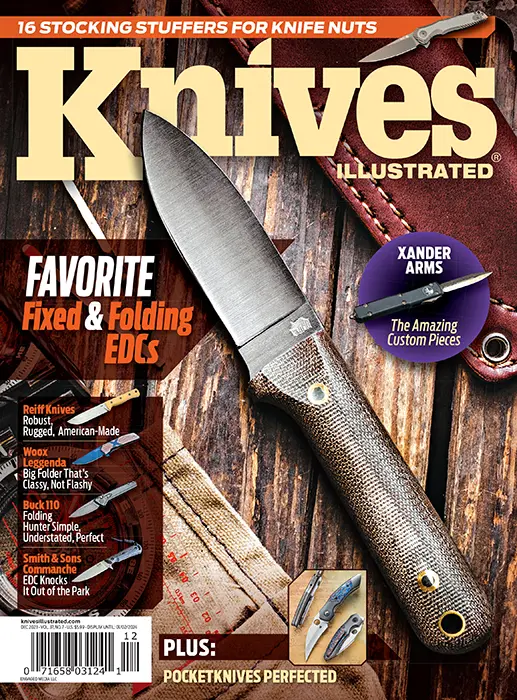 Subscribe / Back Issues
Subscribe / Back Issues